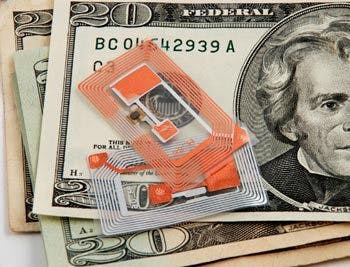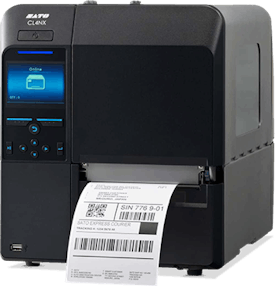Ensuring RFID Bottom Line Payoff

Ensuring RFID'S Bottomline Payoff
Whether a business leapt at the opportunity to become one of the first suppliers with RFID tagged products or now finds itself currently being mandated to employ the technology, the implementation costs and the potential rewards are the same.
To maximize the benefits of RFID, it is critical to view its capability to drive business process improvement, increase supply chain efficiency and ultimately improve bottom line results. From this perspective, the up front capital costs for hardware, engineering consulting costs, opportunity costs, ongoing cost of tags and, in a manual environment, labor associated with the RFID tagging of products are deemed a necessary investment.
Rather than merely RFID tagging products to satisfy the requirements of their largest customers, companies can move from seeing RFID deployment as just the cost of doing business to an opportunity to enhance productivity and profitability. Understanding the impact of data collection and tracking as well as data integration is essential to RFID optimization.
Data Collection and Tracking
The information gleaned out of the data collection is the cornerstone of RFID’s value. In most supply chain applications, the value comes not only from data collected within a single company, but also from the data collected by supply chain partners and shared via supply chain communication portals or retail portals such as “Retail Link”.
Internally, companies can collect data at multiple chokepoints to, among other things, make determinations about process or product flow improvements or to validate proper shipment components and quantities. External data can indicate problems with either too much or too little inventory in the supply chain, product idle time that can be removed from the system or even problems associated with out of stock conditions at the retailer. By gathering the data (internal and external) and turning that data into information, companies can begin to make supply chain decisions that can positively impact how business is done. Many companies are now utilizing the RFID data as a Proof of Delivery (POD), which is a very accurate tracking and tracing method since the RFID serialization is unique to a product, load or pallet.
Data Integration
The data integration component involves the physical connection of the collected data into the host information system (i.e. ERP, WMS, etc). Data integration and how the data is to be utilized is the most important part of any RFID implementation.
Where the data is captured, how it is stored and what is parsed or presented back to the host systems will define the success of the deployment. In most data collection applications today, data is captured and sent back to host systems using barcode technologies. RFID data is really no different in the way it is captured and processed; the difference is that the data is in an electronic format as opposed to barcode format and does not require human intervention or line of sight. Think of RFID as an electronic barcode that allows for additional data storage on the tag and, in many situations, can be modified or updated as needed. This is a huge advantage over traditional barcodes.
Deriving Value from Data
The pièce de résistance is that RFID implementation, done right, results in real-life, bottom- line value. This value flows from the data collection and data integration components into the decision-making process that ultimately leads to the implementation of ideas, processes or controls that bring value to the organization.
Many companies that started early with RFID are now beginning to realize the benefits of the additional data and information being provided via the RFID system. In many cases, suppliers are seeing an internal benefit to using tagged RFID products. They are finding ways to maximize the technology and benefit from the internal visibility the tagged products provide to their systems. For example, one supplier has been able to improve its accounts receivable (AR) process by 72 hours just by having the electronic proof-of-delivery (e-POD) sent when the tagged products are received at their customer’s warehouse. This faster AR process has increased the company’s bottom line due to the interest saved on improving its cash flow. This benefit was realized during the installation and the savings actually paid for the installation of the RFID infrastructure. This is just one of the ways the deployment of RFID technology can be justified.
In another installation, a large retail supplier discovered that the automated process of capturing, via RFID, the unique carton and pallet IDs led to a reduction of mis-shipped products by alerting the shipper when products were being loaded onto the wrong trailer. Additionally, short and overage situations, are now caught prior to releasing the trailer to the customer and because of a time and date trail that includes a “DNA” for each carton and pallet, discrepancies are much easier to resolve. The shipping data, or ASN information, has allowed for a quicker turnaround on accounts payable due to the electronic interface and real-time accuracy of the individual items. In the above example, the company realized a two percent increase in payments that turned its cash flow 10 days earlier on $350 million in business. The RFID deployment has also provided additional value that was not even factored into the analysis prior to implementing the system.
If a company’s RFID system today is still the original “slap and ship” system adopted to simply satisfy the requirements of a supply chain partner, it may as well be slapping dollar bills onto those cartons and pallets. All the potential value of RFID is completely lost and the organization has zero opportunity to realize any economic value from the information that is generated. Only through the collection of internal and external data, and transformation of that data into information can businesses begin to make decisions that positively impact supply chain performance and lead to the RFID deployment yielding significant bottom line results.


